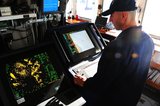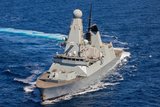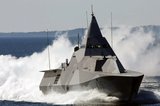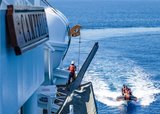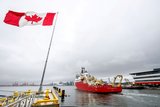US Navy's JSOW C-1 set for operational testing
The US Navy has completed integrated test and evaluation of its Joint Standoff Weapon (JSOW) C-1, according to an announcement on 12 January.
The JSOW C-1 is its first maritime, network-enabled weapon and it underwent the final developmental free flight test at the Sea Range at Point Mugu, California. The test demonstrated the weapon’s effectiveness against maritime moving targets, an essential capability to support the navy’s anti-surface warfare mission.
Capt. Jaime Engdahl, program manager, Precision Strike Weapons (PMA-201), said: 'As we pivot to the Pacific, our capability to employ networked precision strike across our kill chains and engage in offensive anti-surface warfare is key to maintaining our strategic dominance in that theatre.'
An update to the JSOW-C, the C-1 variant incorporates a two-way strike common weapon data link enabling a moving maritime target capability. It is equipped with an imaging infrared seeker and an autonomous target capability to attack targets with precision accuracy.
During the test the JSOW-C1, released from an F/A-18 Super Hornet, scored a direct hit to a moving maritime target and met all primary test objectives. This event proved the system’s readiness to begin operational tests next month.
When operational test commences, Air Test and Evaluation Squadron (VX) 9 will be responsible for implementing real-world scenarios using the JSOW C-1 to verify that the weapon’s capability, suitability and design will be fully responsive to warfighter needs.
The weapon is slated for delivery to the fleet in 2016 after the successfully completion of operational tests.
More from Naval Warfare
-
![Sweden’s decision on four new warships inches closer as it eyes UK, France and Spain]()
Sweden’s decision on four new warships inches closer as it eyes UK, France and Spain
Sweden decided last year that it wanted a significantly larger warship for its Luleå Class programme than originally planned, with three likely contenders that could potentially deliver within the country’s tight schedule.
-
![How the use of artificial intelligence will affect the US Coast Guard’s acquisitions]()
How the use of artificial intelligence will affect the US Coast Guard’s acquisitions
The USCG is pursuing AI tools to improve the way the service conducts its procurement and fielding processes.
-
![US Coast Guard pursues solutions to increase maritime domain dominance]()
US Coast Guard pursues solutions to increase maritime domain dominance
The USCG is seeking technologies, services and applications to better connect its assets and speed up the decision-making process.
-
![Canadian Coast Guard’s OOSV delivery is “major milestone” in fleet modernisation]()
Canadian Coast Guard’s OOSV delivery is “major milestone” in fleet modernisation
The Polar Class 6 platform is the largest CCG science-dedicated vessel and will operate on the country’s east coast.









